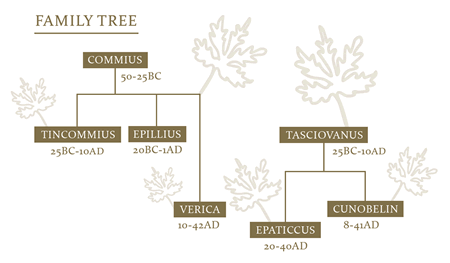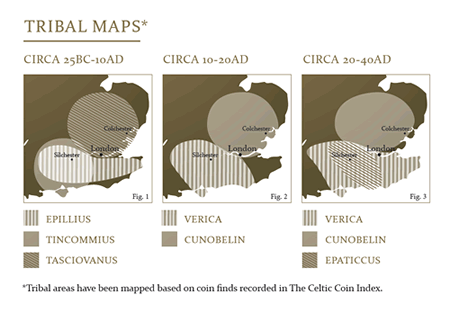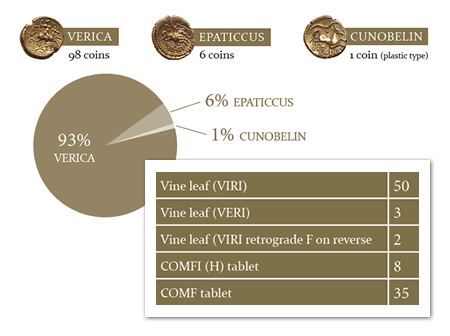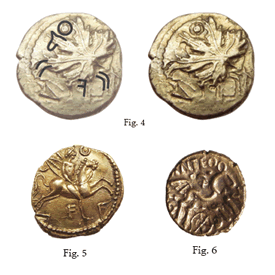The Vine Leaf Hoard (AKA The Chawton Hoard)
Here at Silbury Coins we are very pleased to be able to offer for sale a selection of gold staters from the Vine leaf hoard, an important treasure find unearthed by metal detectorists whilst searching in Hampshire. Each coin sold will be accompanied with a booklet providing a detailed history behind the coins and find itself. The opportunity to acquire coins from such an important find is rarely given to private collectors with most coin hoards being retained by museums.
Details of the Hoard
Found by metal detectorists during spring 2012 on farmland in Chawton, Hampshire the initial hoard consisted of 105 gold staters, 98 of Verica, 6 of Epaticcus and 1 of Cunobelin. Subsequent finds have added another 20 or so coins to this. All coins were duly recorded through the portable antiquities scheme and taken to the British museum for further study. They were declared treasure at an inquest and subsequently disclaimed after local museums couldn’t secure funding and the British museum already has similar finds, namely the Alresford hoard (c1880) and the Alton Hoard (1996). The full Portable Antiquities Scheme report can be found here: Record ID: HAMP-6DFB33 – IRON AGE coin hoard (finds.org.uk) The date of deposition is highly likely to have coincided with Verica leaving Britain in 42AD however it could have been a few years earlier.
Background
Verica, ruler of the Atrebates tribe in southern England around 10-40AD is rather a well-known name within the Iron Age period, here we look in detail at a king who was responsible for great change in Britain during the 1st century AD.
Third son of Commius, Verica is thought to have begun his life as a ruler of the Atrebates sometime around 10AD, being recognised as REX (king) by Rome quite a few years later (around 20AD). This was shown on his coins and made Verica a very powerful ruler, combined with the fact that he got on well with neighbouring king Cunobelin he quickly managed to expand his territories to cover much of England south of the Thames while Cunobelin did the same to the north (Fig. 1-2). Callevum (modern day Silchester) is believed to have been the tribal capital although adding this recent find to the existing record shows 4 major coin hoard finds within 11 miles of Alton, perhaps Verica’s capital was further south than previously thought, there certainly seems to be a concentration of wealth in this area.









